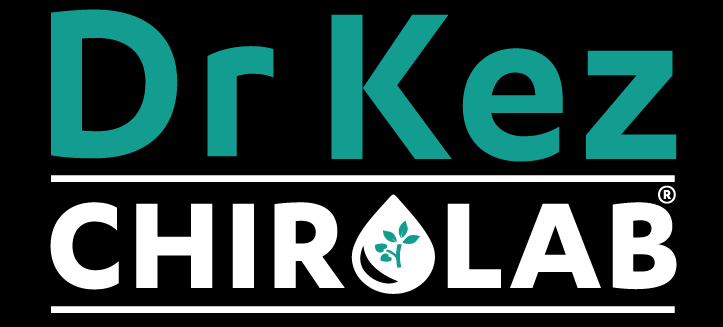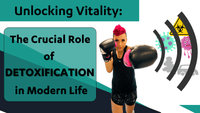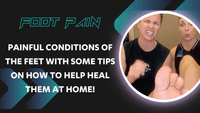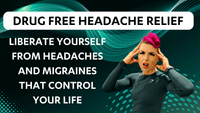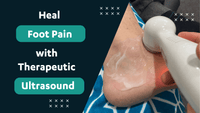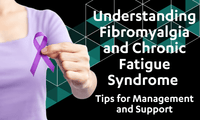
Taking Care of your whole Spine - Naturally!
If there's one thing that can really ruin your day, it's a back condition. And let's be real, the spine is kind of a big deal - it's the highway that connects your brain to the rest of your body, and if there's a traffic jam, you're in for some serious pain.
But fear not, there are plenty of natural remedies that can help alleviate some of the most common conditions that occur in the neck, middle back, and lower back. So let's dive in, shall we?
Neck Conditions
First up, let's talk about the neck. This delicate little area is home to seven vertebrae, and if something goes wrong, it can really cramp your style. Here are some of the most common neck conditions, and what you can do about them.
-
Neck Strain: Ah, the classic "I slept wrong" scenario. Neck strain is a common condition that occurs when you overuse or overstretch the muscles in your neck. It can be painful, but luckily, it's usually not serious. To help alleviate the pain, try applying heat or ice to the affected area (the wrap on ice pack is great for this - hands free icing/heating). Also consider applying Kirofix to the area as well as the ultrasound to help the healing process along.

- Whiplash: If you've ever been in a car accident, you know how painful whiplash can be. This condition occurs when your neck is suddenly jerked forward and then backward, causing damage to the muscles and ligaments in your neck. If you suspect you have whiplash, it's important to see a doctor to help determine the extent of the injury. The best way to treat a whiplash injury at home is by using the Bone Aid Relief Cream and Trauma Relief Cream directly on the neck and shoulder area and then use the therapeutic ultrasound to speed up healing.
- Herniated Disc: A herniated disc occurs when one of the discs in your spine (the rubbery cushions between your vertebrae) ruptures or bulges out from where it should be. This can cause pain, numbness, and tingling in your neck, arms, and shoulders. While severe cases may require surgery, many herniated discs can be treated with rest, ice, therapeutic ultrasound and physical therapy, such as Chiro or Osteo treatments.
So many things you can do to support this important area of the spine, click on the video below to watch Em go through some great stretches and home help options to relieve neck pain.
Upper/Middle Back Conditions
Moving on down to the upper/middle back, we've got another set of vertebrae to worry about (12 of them, to be exact). Here are some of the most common conditions that can occur in this area, and what you can do about them.
-
Thoracic Sprain: Just like in the neck, a sprain in the middle back can occur when you overuse or overstretch your muscles. This can be caused by poor posture, lifting heavy objects, or sudden twisting movements. To help alleviate the pain, try applying heat or ice to the affected area. Applying the Kirofix® Injury Relief Lotion to the area as well as the ultrasound may help the healing process along.

- Osteoarthritis: As we get older, our joints can start to wear down, and the spine is no exception. Osteoarthritis is a common condition that occurs when the cartilage that cushions your joints begins to break down, causing pain, stiffness, and swelling. To help alleviate the symptoms of osteoarthritis, try exercising regularly, including stretching, and take a look at the trio of creams, which helps with the bone aspect of osteoarthritis, the soft tissue aspect and increases the blood flow which is pertinent for healing.
- Scoliosis: Scoliosis is a condition in which the spine curves to the side, rather than remaining straight. While some cases of scoliosis are mild and require no treatment, others can be more severe and may require surgery. If you suspect you have scoliosis, it's important to see a doctor for a proper diagnosis and treatment plan.
For more information on the middle back area, including some tips, exercises and home help treatments click on the video below to watch a replay of our live on the thoracic spine.
Lower Back Conditions
And finally, we've arrived at the lower back - the area that seems to cause the most trouble for most people. This area is home to five lumbar vertebrae, and is responsible for supporting the weight of your upper body. Here are some of the most common conditions that can occur in the lower back, and what you can do about them.
-
Lower Back Strain: Just like in the neck and middle back, a strain in the lower back can occur when you overuse or overstretch your muscles. This can be caused by poor posture, lifting heavy objects, or sudden twisting movements. Once again the Kirofix® or Trauma Relief Cream are the best for strains anywhere in the body. Using the ultrasound as well is a very powerful combination.

- Sciatica: Ah, sciatica - the bane of many people's existence. This condition occurs when the sciatic nerve (which runs from your lower back down through your hips and buttocks) becomes compressed or irritated. This can cause pain, tingling, and numbness in your lower back, hips, and legs. To help alleviate the pain, try doing gentle stretches to help loosen up your muscles, applying heat or ice to the affected area, using a Spikey ball and getting the ultrasound on your lower back and buttock area. Don’t forget to use the Trauma Relief Cream or Kirofix® Injury Relief Lotion for the inflammation and the Bone Aid Relief Cream as it’s great for nerve pain.
- Herniated Disc: Just like in the neck, a herniated disc in the lower back occurs when one of the discs in your spine ruptures or bulges out of place. This can cause pain, numbness, and tingling in your lower back, hips, and legs. While severe cases may require surgery, many herniated discs can be treated with rest, ice, ultrasound and physical therapy.
- Spinal Stenosis: Spinal stenosis occurs when the spaces within your spine become narrow, putting pressure on the nerves that run through it. This can cause pain, numbness, and tingling in your lower back, hips, and legs. While severe cases may require surgery, many cases of spinal stenosis can be managed with stretches to alleviate tight muscles and exercises to help strengthen weak muscles, physical therapy like Chiro or Osteo is also extremely helpful for spinal stenosis. At home however, the Ultrasound with Kirofix® will be your best friend.
- Osteoporosis: Osteoporosis is a condition in which your bones become brittle and weak, increasing your risk of fractures and breaks. While this can occur in any part of your body, it can be especially problematic in the spine. To help prevent osteoporosis, make sure you're getting enough calcium and vitamin D in your diet, and try doing weight-bearing exercises like walking or resistance band exercises to help strengthen your bones.
For more information on lower back conditions, including some handy stretches to keep your lower back functioning well and some great home help options, check out the video below.
Muscle imbalances
One thing that is common amongst all areas of the spine is postural imbalances. If muscles at the front of the body are stronger than those at the back (or vice-versa), it results in poor biomechanics which takes its toll on how your spine functions. Not only does it have an effect on your posture, but it can also wreak havoc on your shoulders, hips, knees, ankles and feet. Leaving these muscular imbalances in the spine untreated can result in conditions of the lower limb and shoulders lasting way longer than they otherwise could. For more information on the two most common postural imbalances and what to do to rebalance them, check out the video below.
A must know technique
When it comes to nurturing the spine my first thought is being treated by a Chiro, but the reality is, we should nurture our spine more frequently than that. What the spine needs even more than an adjustment is good blood flow. This can be achieved with massage, cupping, dry needling etc. but an even simpler way to increase blood flow to your spine is by laying on an acupressure mat. Check out the video below to watch us share a brilliant technique on how to open up your spine while using your acupressure mat to flood the spine with nutritious blood flow (including the discs and facet joints).
So there you have it, folks - a rundown of some of the most common conditions that can occur in the spine, and what you can do about them naturally. Of course, it's always important to see a doctor, Chiro or Osteo if you're experiencing persistent pain or other symptoms, but hopefully these tips will help you get some relief in the meantime. Now go forth and take care of that spine!

